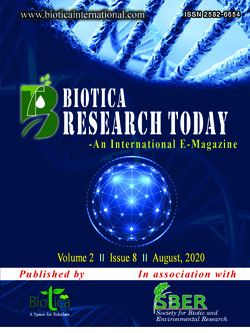
Desert Locust and Climate Change: A Risk for Agriculture
Hemadri Bag*
Dept. of Agrometeorology, School of Agriculture, GIET University, Gunupur, Rayagada, Odisha (765 022), India
Lopamudra Bhoi
Dept. of Plant Breeding and Genetics, School of Agriculture, GIET University, Gunupur, Rayagada, Odisha (765 022), India
DOI: NIL
Keywords: FAO, IOD, Locust, Serious risk
Abstract
Locusts are migratory, trans-boundary pests. Wet conditions can cause further worse locust outbreaks worst case scenario, they can destroy the livelihoods of one-tenth of the world’s population, according to the FAO. As per the Food and Agriculture Organization of the United Nations (FAO), these locust attacks are going to intensify with rains. The United Nations has warned that this year, India’s farmers are at a “serious risk” from locusts swarms. As greenhouse gases continue to warm up the ocean and the atmosphere, extreme events caused by the Indian Ocean Dipole (IOD) are predicted to be increasingly common place.
Downloads
not found
Reference
WMO, 1175: Weather and desert locust (2020), World Meteorological Organization and Food and Agriculture Organization of the United Nations, 2016. ISBN 978-92-63-11175-4 (WMO) ISBN 978-92-5-109426-6 (FAO).
Sankar and Shreedevasena, 2020. Desert Locusts (Schistocerca gregaria) – A Global Threatening Transboundary Pest for Food Security. Biotica Research Today. 2(5) Spl. 389-391.
Zhang, L., Lecoq, M., Latchininsky, A., Hunters, D., 2019. Locust and grasshopper management. Ann. Rev. Entomol., 64, 15-34.
